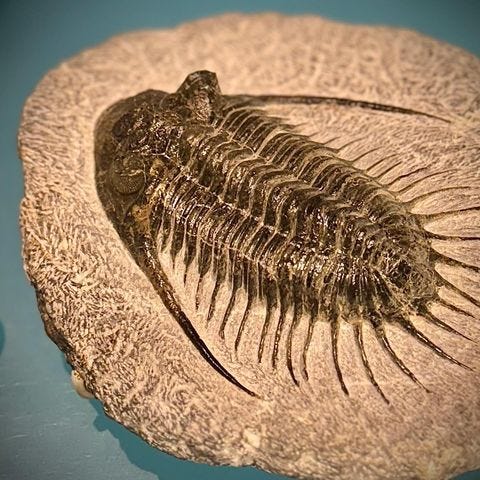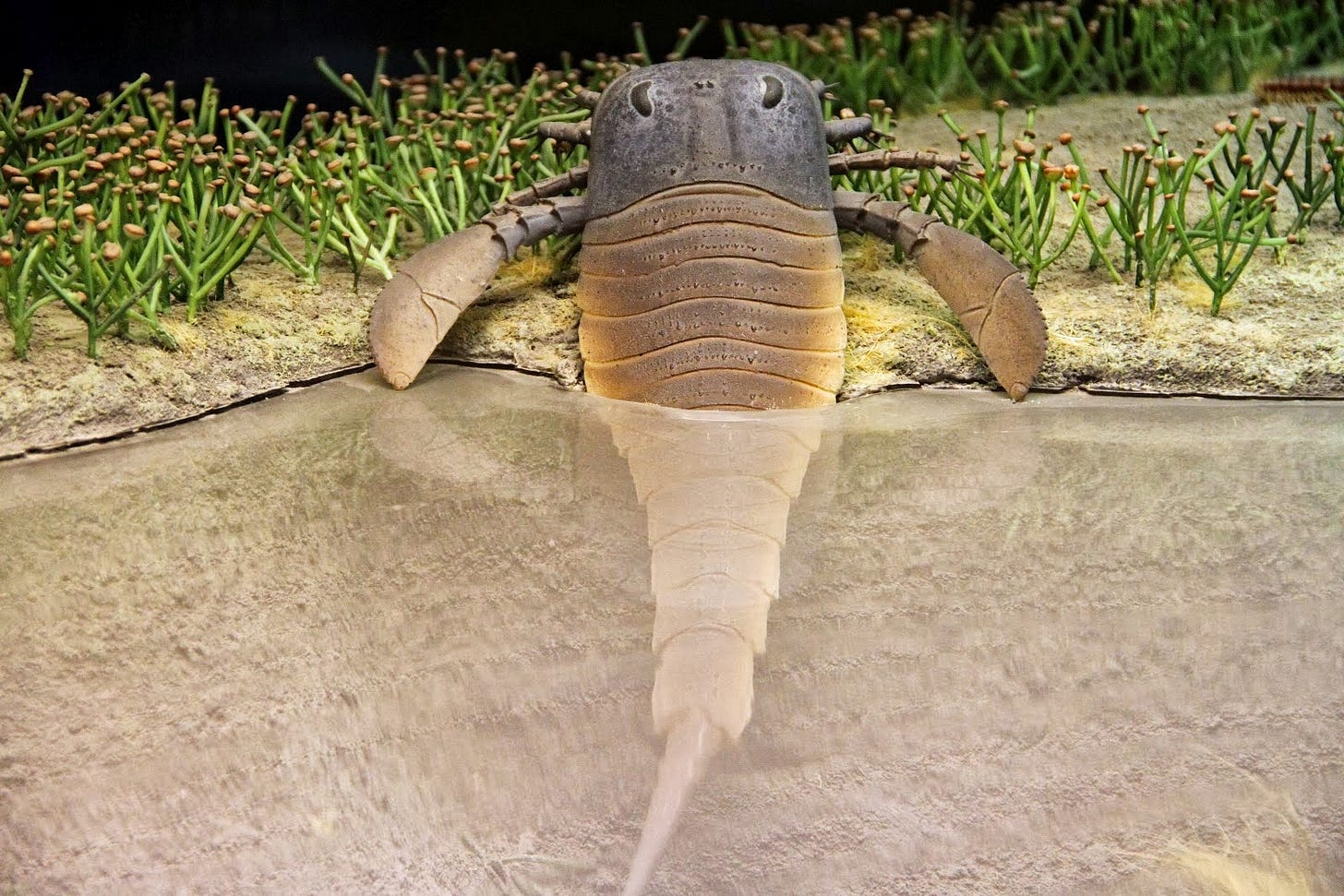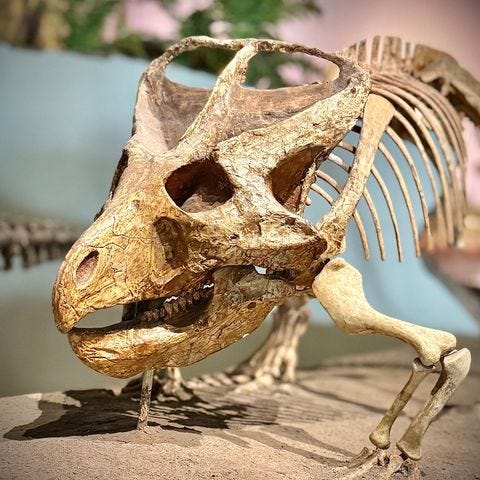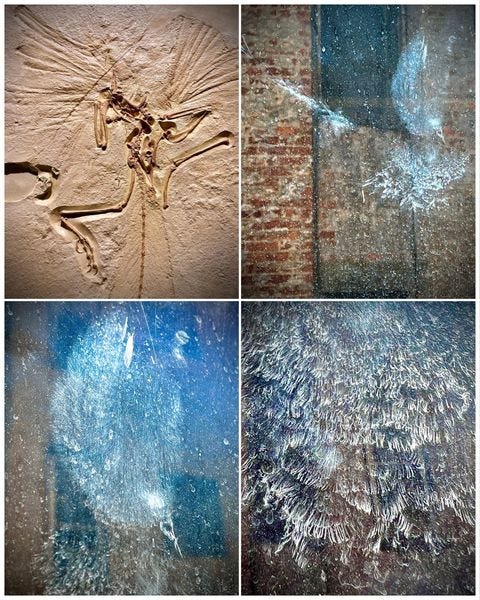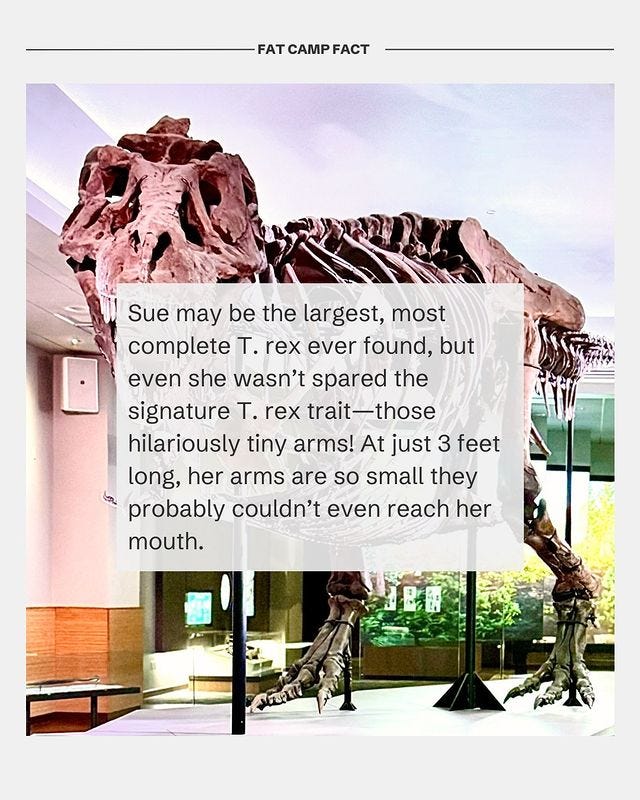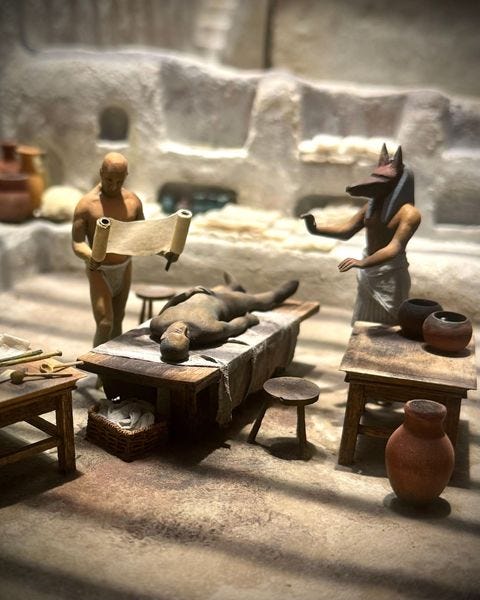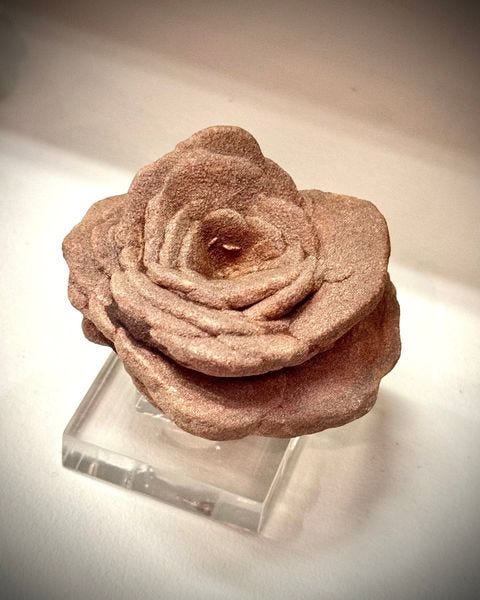A Private Tour of the Field Museum
A Must-See Icon in Chicago
One of the highlights of our trip to Chicago was getting the chance to visit the Field Museum. If you’re a fan of natural history and ancient civilizations or—like me—a bit of a dinosaur nerd, this place is an absolute must-see. It’s also one of the city’s most famous landmarks, sitting right on the shores of Lake Michigan as part of Chicago’s massive Museum Campus. This area also includes the Shedd Aquarium and the Adler Planetarium, making it a paradise for anyone who loves to soak up knowledge.
The Field Museum has been a part of Chicago’s history since 1893 when it was originally established as part of the World’s Columbian Exposition.
Over the years, it has grown into one of the world's largest and most respected natural history museums. It houses over 40 million artifacts and specimens, covering everything from the dawn of life on Earth to the mysteries of ancient Egypt. But the crown jewel, and honestly one of the reasons I couldn’t wait to visit, is Sue the T. Rex—the most complete and best-preserved Tyrannosaurus rex skeleton ever discovered.
But what really took our experience to the next level was the opportunity to do an early access tour of the museum, which we were able to reserve on Trip Advisor for $73 a person (no affiliation). This unique experience lets you enter the museum an hour before the general public, giving you a rare chance to explore in near solitude. Plus, you get a private tour guide to walk you through the exhibits, which makes the whole experience even more engaging and personalized.
Early Access: Exploring the Field Museum Before the Crowds
Since the early access tour starts at 8 AM sharp, they recommend arriving about 15 minutes beforehand. That gave us just enough time to grab breakfast at a nearby spot, Little Branch Cafe, which opens at 7 AM. The food was decent, but the service was slower than I would have liked, considering we were the only people there. If you’re like me and get a bit antsy about being late for anything, I suggest planning breakfast ahead so you don’t feel rushed. We were instructed to arrive at the East Entrance, where our friendly guide greeted us. If you’ve never been to the Museum Campus, the area can feel a bit sprawling, so I recommend giving yourself some extra time to find your way around.
Once inside, the museum is dead quiet at this time, with the lights mostly off or set low and only a few staff members quietly preparing for opening at 9 am. Our guide asked us what we were most interested in, and as someone obsessed with dinosaurs, I immediately mentioned Sue and wanted to see the other dinosaur skeletons, too. The flexibility of this private tour was fantastic. Our guide tailored everything to our interests and even adjusted the pacing based on how much time we wanted to spend at each exhibit. It wasn’t the rigid, scripted kind of tour where you’re shuffled from one exhibit to the next. Instead, it felt like an open-ended exploration, with our guide there to share deeper insights and answer any questions.
We started our tour with the Evolving Planet exhibit, which takes you on a 4.5 billion-year journey through the history of life on Earth. From the formation of the planet to the rise of humans, this exhibit is absolutely massive, and you could easily spend hours getting lost in it. Our guide kicked things off by walking us through the different time periods, highlighting major moments in evolutionary history.
As we continued through Evolving Planet, we moved from the early microbial life of the Precambrian Era to the explosion of complex life during the Cambrian Period. The Cambrian Explosion, which occurred about 541 million years ago, is one of the most fascinating periods of Earth’s history. It was a time when life on Earth rapidly diversified, leading to the emergence of almost every major group of animals that still exists today. The exhibit features incredible fossils from this time, including trilobites, some of the first animals to develop hard exoskeletons. Seeing these fossils up close made it all feel real like you were peering into a window back in time.
One of the most interesting things we learned during this part of the tour was that each state in the U.S. has its own official fossil. This was something I had never heard of before! Our guide mentioned that Illinois' state fossil is the Tully Monster, a strange, soft-bodied creature that lived about 300 million years ago. This little tidbit made me appreciate how connected the state is to prehistoric life, and the fact that each state has its own fossil just adds a fun layer of history that I wasn’t expecting. The Tully Monster itself is a bizarre-looking creature with a long, tube-like body and a jaw at the end of a proboscis, making it one of the most unusual fossils on display.

Of course, I had to look up New York’s fossil hoping for something more impressive and wasn’t disappointed. The official state fossil of New York is the Eurypterus remipes, which lived around 400 million years ago during the Silurian period.
Eurypterids are often referred to as "sea scorpions" and are related to modern arachnids like scorpions and spiders. Fossils of Eurypterus remipes were first discovered in New York, and it was designated the state fossil in 1984. These creatures were typically about a foot long but could grow much larger, and they lived in shallow, brackish waters.
also learned that many of the fossils on display were discovered by the museum’s own scientists, who are still out in the field doing research today. The Field Museum isn’t just a place to display history—it’s actively involved in unearthing it.
As a dinosaur fan, I loved seeing fossils from other prehistoric creatures, including massive sauropods, raptors, and some ice-age creatures like the giant sloth and saber-tooth cat. The exhibit is incredibly well-curated, with fossils, dioramas, and interactive displays that make you feel like you’re walking through time. One of the coolest parts was seeing the fossil of an early human species. There’s something humbling about standing next to the remains of our ancient ancestors, knowing that they once walked the same Earth we do today.
Our guide did a great job explaining the significance of each section, and because the museum was still empty, we had plenty of time to ask questions and take some incredible pictures. It was refreshing not to feel rushed, and we were able to appreciate exhibits we might have skipped over if we had been visiting during regular hours.
One of the highlights of the tour was getting to see the Chicago Archaeopteryx—a rare feathered dinosaur that’s a crucial link in the evolution from dinosaurs to birds. As a dinosaur fan, I could have easily spent the entire day just wandering through this section. It’s just one of the many reasons the Field Museum stands out. Their fossil collection is world-class, and exploring it with a private guide made it even better.
Our tour ended at Sue’s exhibit. As I mentioned earlier, Sue the T. Rex was one of the main reasons I wanted to visit the Field Museum in the first place. She is the largest and most complete Tyrannosaurus rex skeleton ever discovered, and she’s become something of a celebrity in the paleontology world. Standing in front of her, you really get a sense of how massive and powerful these creatures were.
Our guide shared some great details about Sue’s discovery, from how she was unearthed in South Dakota in 1990 to the complicated legal battle over who owned her bones. It was fascinating to hear how Sue eventually made her way to the Field Museum, and how scientists continue to learn from her to this day.
Sue isn’t just a static display—she’s an ongoing source of research, and the museum even has a DNA Discovery Center where visitors can see real scientists working on dinosaur fossils and other projects.
This moment was even more special because we had the room completely to ourselves. Normally, Sue’s exhibit is packed with people, all jostling to get the perfect photo. But with the early access tour, it was just us, Sue, and our guide who was nice enough to take a few pictures of us next to the massive skeleton. It’s hard to describe how awe-inspiring it is to be face-to-face with a creature that lived 67 million years ago, and the private setting made it even more memorable.
Exploring on Our Own: More Exhibits and Hidden Gems
After our guided tour wrapped up around 9 AM, we were free to explore the museum on our own for the rest of the day. What’s great about the early access tour is that it includes tickets to all the paid exhibits, so we had access to everything. Before leaving, our guide gave us some great suggestions on what to see next, and we hit a few more highlights before the crowds rolled in.
One of the first stops we made was the Inside Ancient Egypt exhibit. I’ve always been fascinated by ancient Egypt, and while this exhibit wasn’t as large as the on we have at the MET in New York City, it was still really cool. They have mummies, ancient artifacts, and even a reconstructed tomb that you can walk through. It’s a bit of a smaller exhibit, but definitely worth a visit if you’re into ancient history. I really loved the dioramas that showed off the mummification process, and their level of detail was very impressive.
We also wandered through the Hall of Gems, which was absolutely stunning. The collection features some of the most beautiful gemstones and minerals I’ve ever seen, each one sparkling under perfect lighting. Even if you’re not particularly into geology, this exhibit is worth checking out just for the sheer beauty of it.
But one of the most unexpected highlights was the Underground Adventure exhibit. This one is a bit different from the traditional natural history exhibits, and it’s a lot of fun. You start in a room that leads down a long hallway with slanted floors that makes you feel like you are being shrunk down to the size of a bug. As you walk through the interactive exhibit, you can’t help but feel like you’re in the movie “Honey I Shrunk The Kids.” The level of detail of all the exhibits really helped sell the illusion, and it was a fun, unexpected twist in our museum visit.
By the time we finished exploring, it was about 11:30 AM, and the museum was starting to fill up with people. On the way out, we stopped by the gift shop (which opens at 10 AM) to pick up some Sue-themed souvenirs—I couldn’t resist grabbing a Sue hat, a “T-Rex hate push-ups” shirt, and a pair of dino socks. It was a great way to wrap up our morning at the museum!
What You Should Know to Get the Most Out of Your Field Museum Experience
After experiencing the Field Museum’s Early Access Tour, there are a few key tips to make the most of your visit.
Early Access is a Must: If you can, book the Early Access Tour. Starting an hour before the museum opens to the public means you’ll have the museum almost to yourself. Weekdays are especially great for this, as the museum has fewer early-morning visitors, so we were only on the tour.
Tailor the Tour to Your Interests: The best part about the Early Access Tour is that it’s customizable. Let your guide know which exhibits you’re most excited to see, so you can focus on your favorite areas. We spent extra time in the dinosaur and Evolving Planet sections, but the guide was flexible, allowing us to skip parts we weren’t as interested in.
Plenty of Time to Explore: Once the guided portion ends at 9 AM, you’re free to roam the museum with your all-access ticket. We took full advantage of this, exploring some of the paid exhibits we usually wouldn’t go to. Having those quiet morning hours allows you to see more and beat the crowds.
Overall, I’d give this experience a 5 out of 5—it’s a must-do for anyone who loves museums and wants to make the most out of their visit!



